Forensic Behavior analysis
This can be defined as the basics of broad application of scientific tools for the study and evaluation of behavior. It involves the application of scientific methodologies in answering the various question allied into the examination of behavior study characteristics.
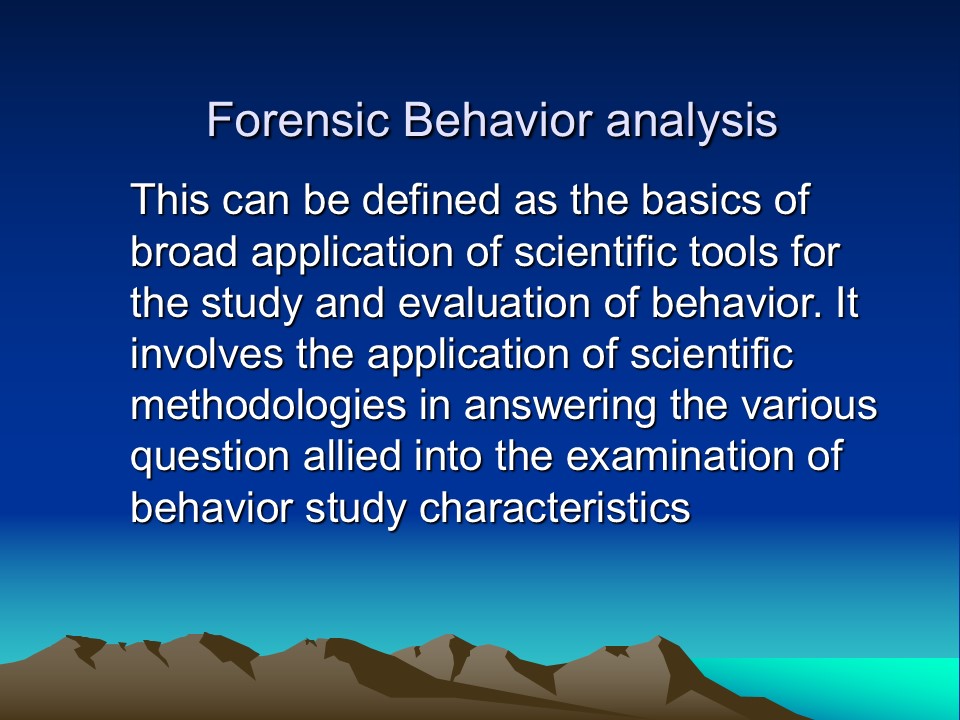
Behavioral analysis
This is the study and evaluation through various tools the reactions and the action and an individual as determined by the state of environment which is subjected to the person. Human being depict various behavioral standards with the changing environment such as the culture, ethical values, attitudes and morals, authorities, laws and orders above others. (Pierce, Chiney, 2004).
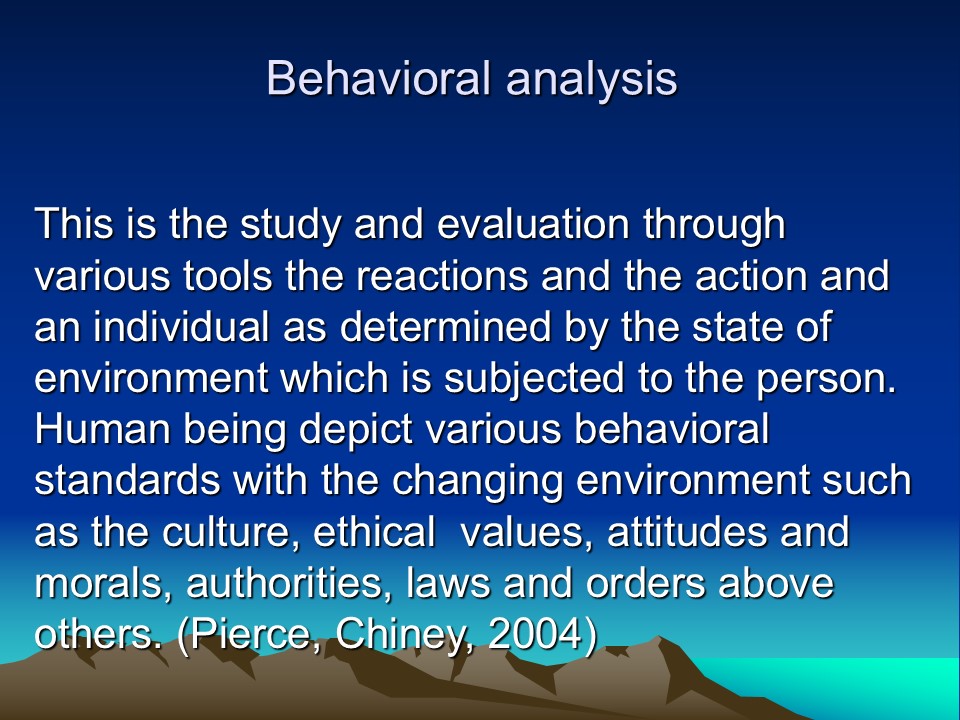
Application of forensic behavioral analysis
In all facets of learning and examining human behavior such as in criminology, psychology, schools, health sciences above other. The basic intention is to provide standards with which the investigators can be able to build concise rationality about the standards of behavior of different persons.
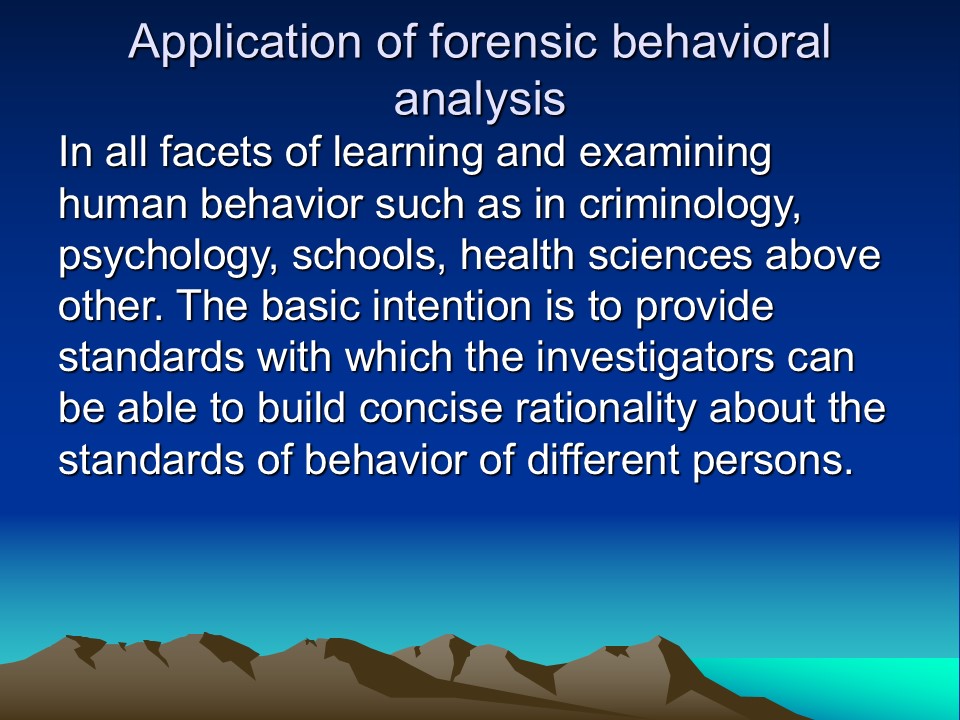
The k-12 Behavior Analysis
Due to the fragility in the behavior of young children in school, the application of K-12 behavior support system is perhaps the most important and adequate tool with which the students can develop a positive behavior in the school environment. This is because of the encapsulation of relatively many conflicting processes compounded by a small developed psychological nature. (Smith, 2006).
The basic aim of the K-12 education service is to provide fountain behavior grounds for the development, implementation, evaluations and elsewhere adequacy in service dissemination within the student fraternity within the school environment. This helps to prepare the students to higher heights of better academic achievements.
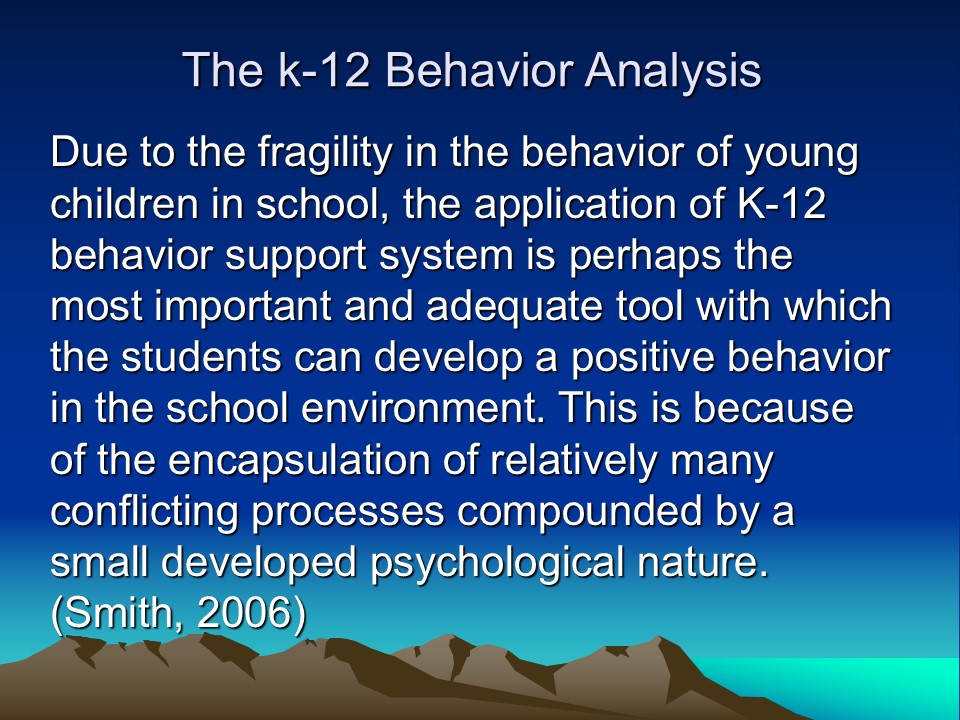

Components of the K-12 model
This is a four component model:
- Curriculum Management.
- Peer tutoring.
- Family tutoring.
- In-service training.
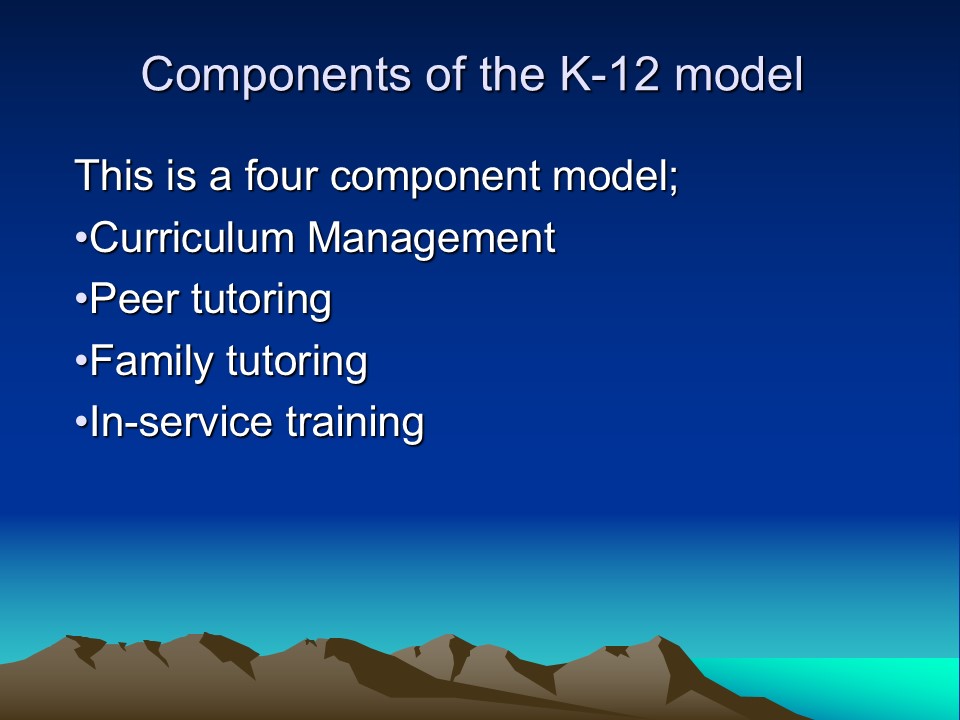
Curriculum management
This is a system of assessment of the mainstreamed students. It involves various tool for providing remediation plans for students involved in various problems in their academics. The climax of this component is through tracking the end monitoring the process: process of the student in their studies aimed at drawing various tool for use in developing the most adequate tools, tactics and support for the student performance support (Horley, 2003).

Peer Tutoring
This is a program aimed at providing educative support in the matters of peer influence which would be effective in the learning process. This acts as a basic remedy to the pitfalls that may be ascribed to peer influences. The same tutorial and counseling are aimed at providing basics of student dominance in situations of volatile peer group influence. Consequently, students are tutored on the basics of over coming the various impediments which occurs as a result of peer influence fractures.
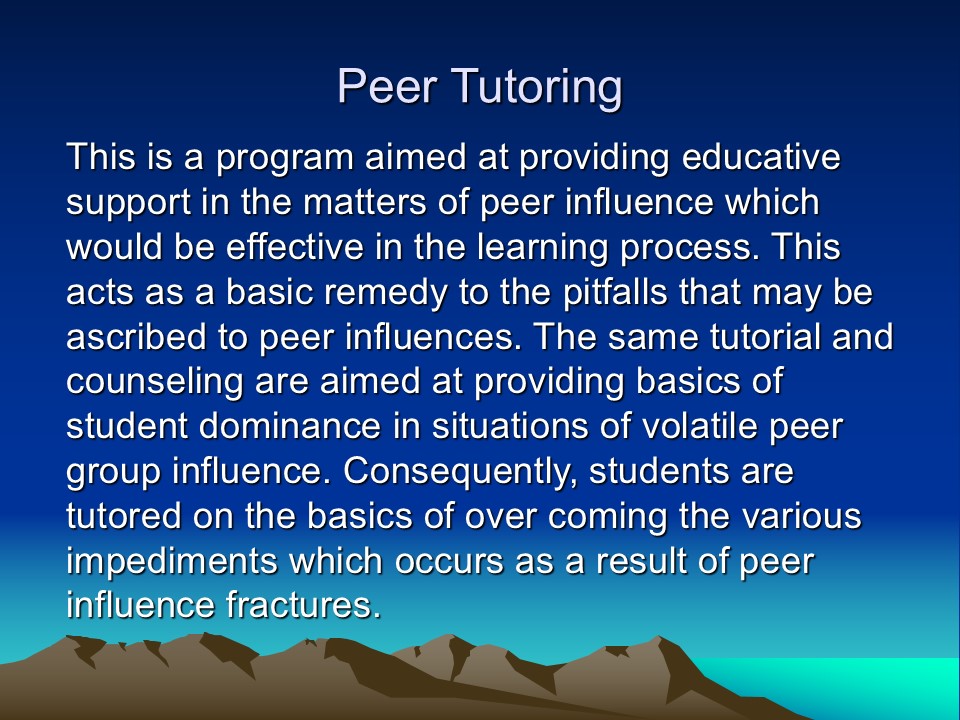
Family Tutoring
This is an important program which is aimed at providing a discretional support advice on the relative influence to the learning process which may be born of the family blocks. It seeks to highlight the influential characters of various family matters in the process of learning. Various parties into it are broad into consideration through a dialogue and how their influence is credited in the learning process. The role of the parent is held at a high point in explaining the cornerstone implication of the family environment in the success of the student learning. (Bartol, Bartol, 2006).

In-service training
This is the basic component with which the various persons allied to the learning processes are provided with the basic training knowledge for use in providing adequate support for the students learning. The component stresses on the importance of high qualification in the personnel structures playing various occupational roles in the students education system.
For adequacy in the learning process, the four components should be in solidarity with one another. Each will help to strengthen the other and reduce the possible stumbling blocks in in the learning system.
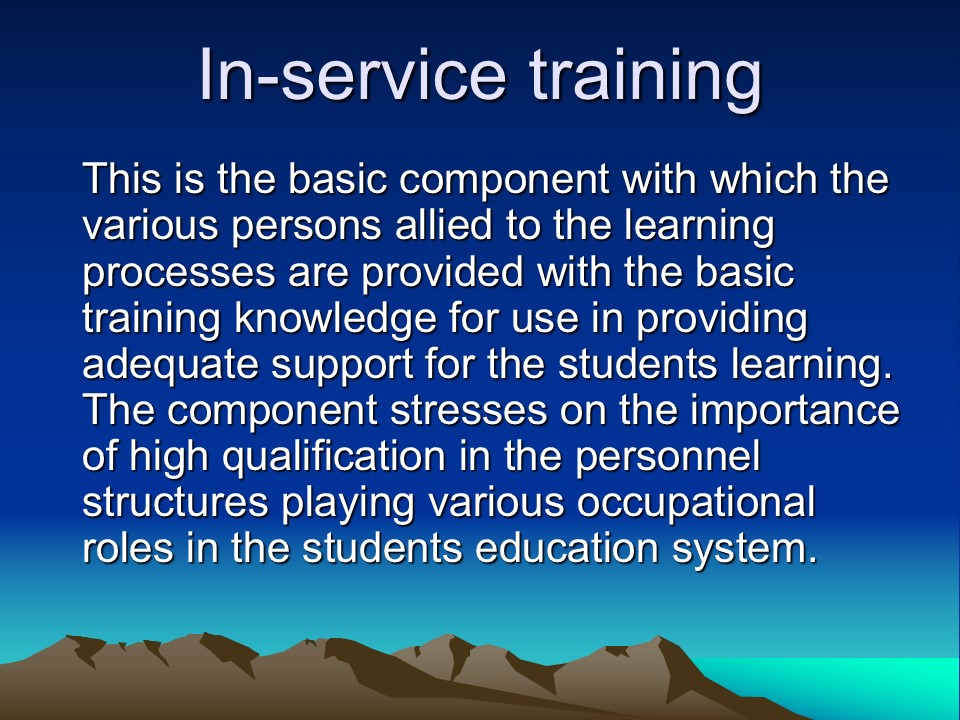

Role of the teacher
The teacher plays a comparatively important role in the students learning. Adequacy in the self-assessment by the teacher should be highly motivated and never compromised if the result orientation in the learning process is to be promoted. Every self assessment helps to facilitate the growth of professionalism. The teacher self-assessment should be in relation to the basic requirements of the students learning. Adequacy should be provided to the teacher in line with students with special needs. (Simon, 1996).
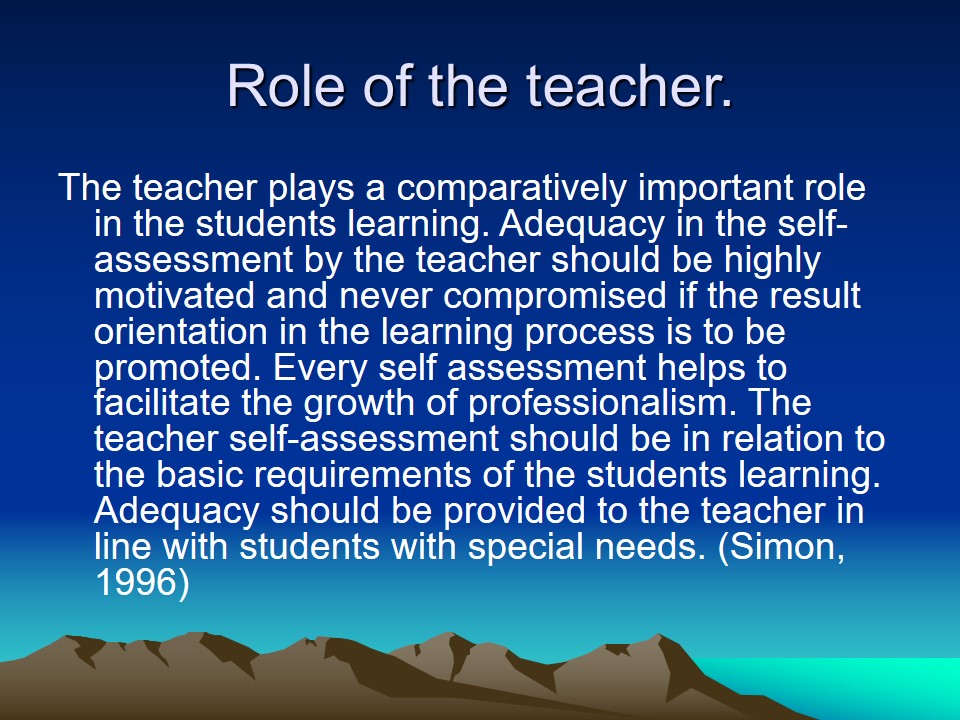
Student behavior
The behavior characteristic of the student is a broad phenomena of various actions and also reactions which grows out from the changing environmental characteristics within the various sets of the students upbringing. High behavior support for the students should be promoted through teachers and parents togetherness. Adequacy in the home-school environment should be ensured through the collaboration of the teachers and also the parents (Bartol, Bartol, 2004).
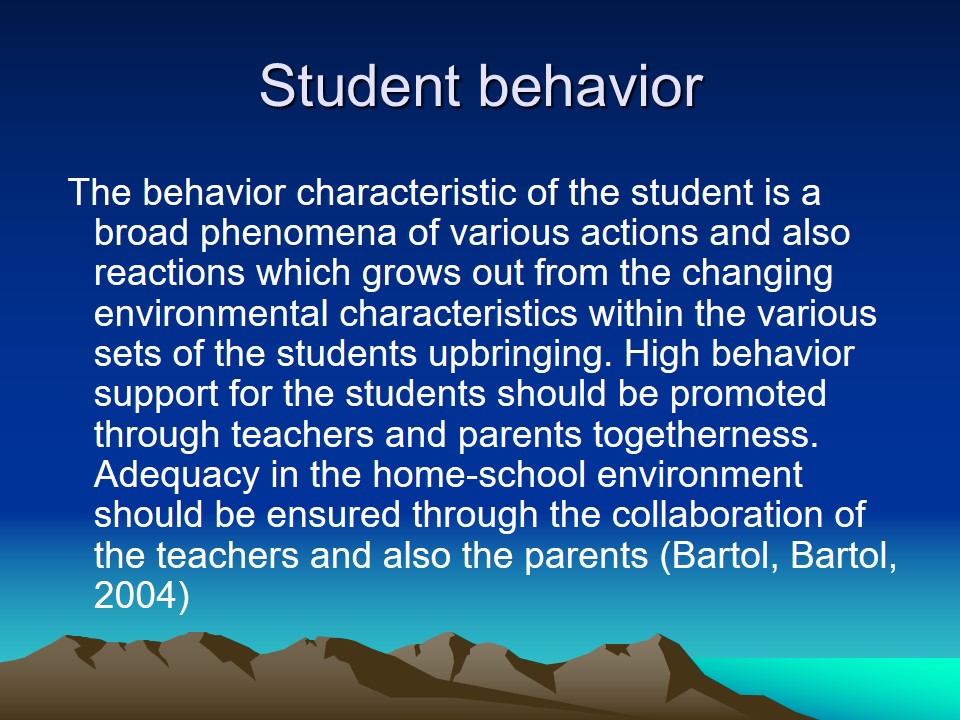
Importance of forensic behavior analysis to students
Great instrument of monitoring, studying and evaluating the students behavior should be put in place to provide a good support in ensuring a sound students behavior. Various tools and variables may be observed in the due process of behavior study. Such as modification, behavior assessment positive behavior reinforcement, peer influence self control and interpersonal competence above others.
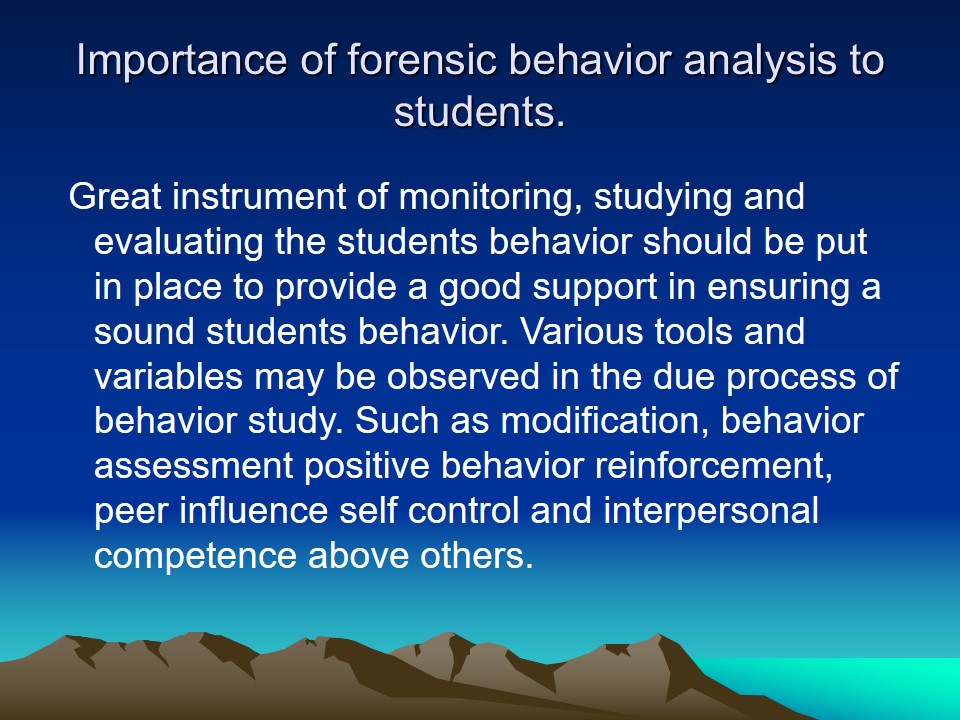
The Parent-teacher collaboration
The collaborative role of the parents and the teachers should never be overlooked. Broadly, the unity of both ensure a positive condition with which a solid student uprightness in behavior can be supported. It seeks to ensure a coordinated approach both at home and at school which are the basic areas modeling the students behavior. At home the parent should monitor the child’s behavior while the teacher takes control at school.
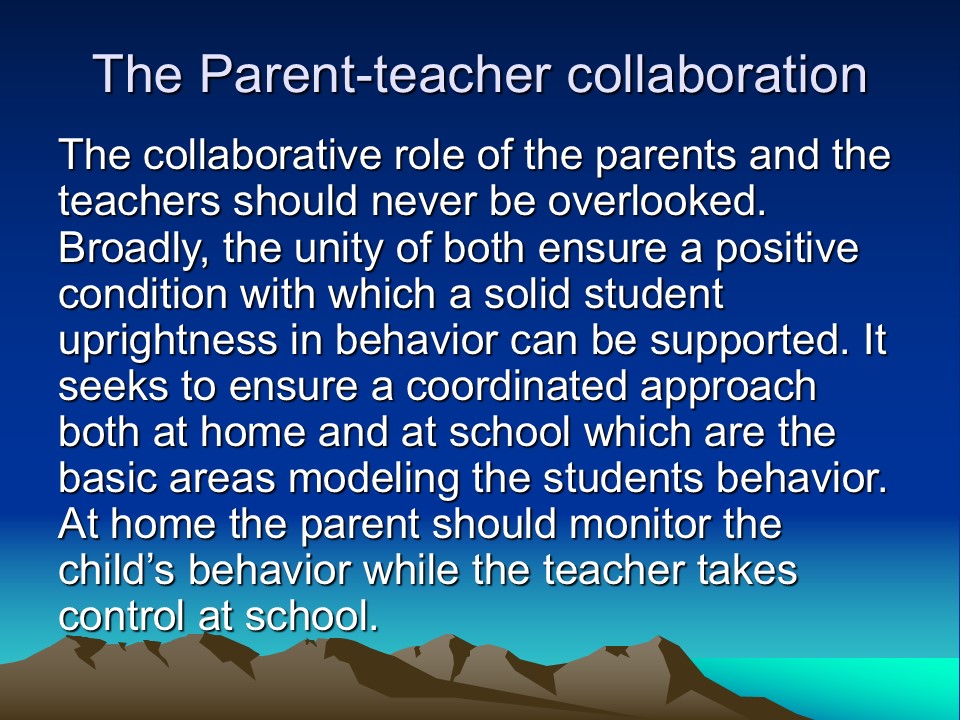
Truck System
A comprehensive system of tracking should be used in studying the nature of the students progress and behavior. With an adequate modality into standards of tracking such behavioral conception, various structures cab be put in place to model the existing state of the Childs behavior. The same truck system can also be used to monitor the students progress in the learning process.
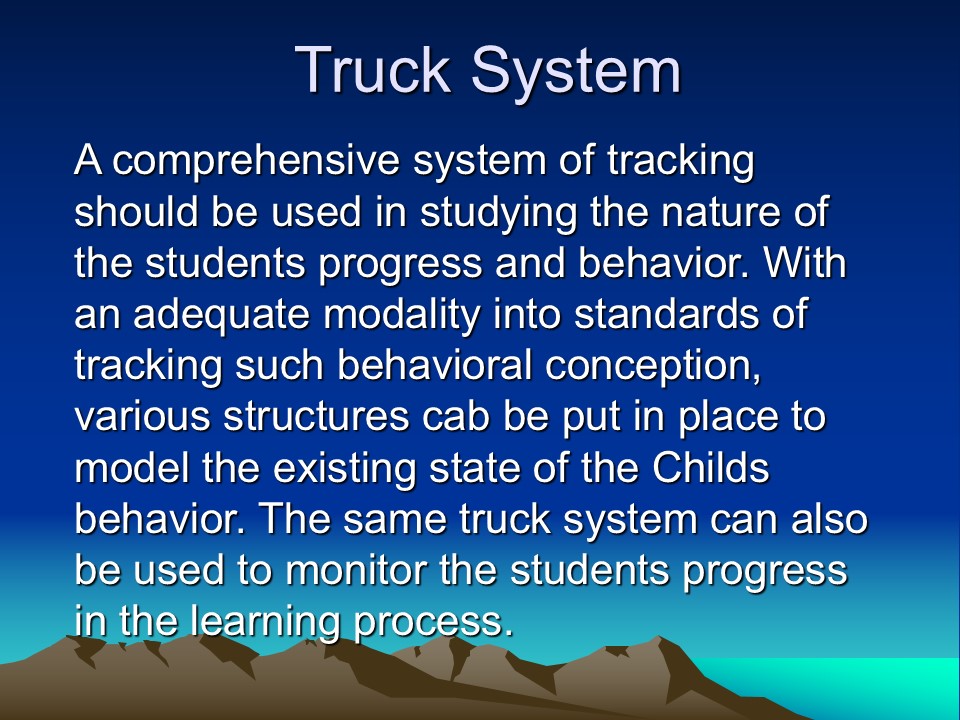
Reference
Bartol, C & Bartol, A. (2004) Introduction to Forensic Psychology. Thousand Oaks, CA: Sage Publications.
Bartol, C & Bartol, A. (2006) Current Perspectives in Forensic Psychology and Criminal Justice. Thousand Oaks, CA: Sage Publications.
Horley, J. (2003) Personal Constructs on Forensic Psychology. London: Routledge.
Pierce, W & Cheney, C. (2004) Behavior Analysis in Human Behavior and Evolution. The Psychological Record, Vol. 56.
Simon, R (1996) Bad Men Do what Good Men Dream: A Forensic Psychiatrist illuminates the Dark side of Human Behavior. London: American Psychiatric Press.
Smith, A. (2006) Cognitive Empathy and Emotional Empathy in Human Behavior and Evolution. The Psychological Record, Vol. 56.